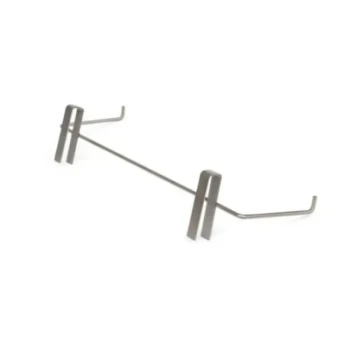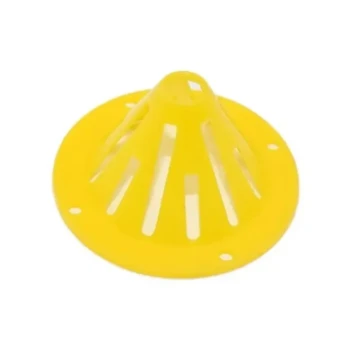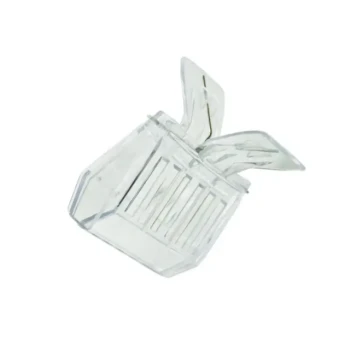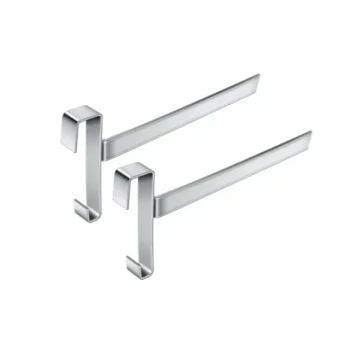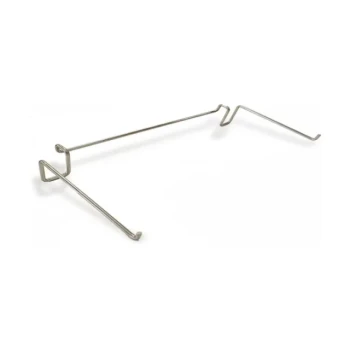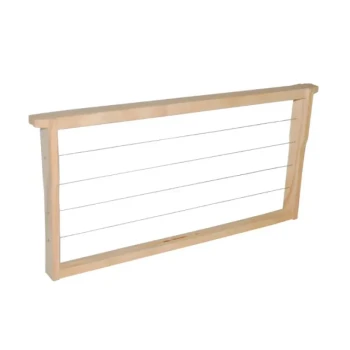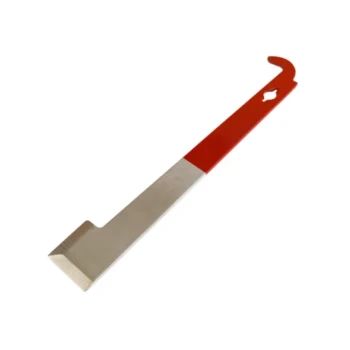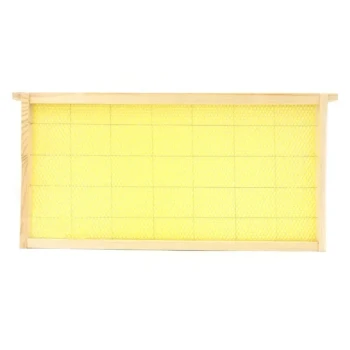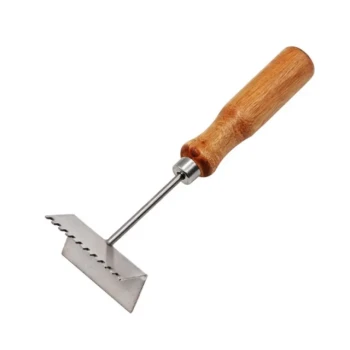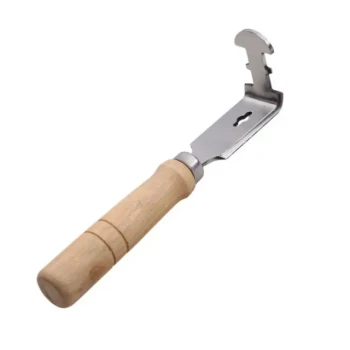In essence, a bee suit is a specialized protective garment that provides full-body coverage for a beekeeper. It is designed to create a physical barrier between the wearer's skin and honeybees, preventing stings during hive inspections, honey harvesting, and other essential tasks. The typical suit consists of a jacket or full-body coverall, pants, and an integrated veil to protect the face and neck.
A bee suit is more than just clothing; it is a critical piece of safety equipment. Its primary function is to provide the beekeeper with the security and confidence needed to work calmly and deliberately, which is essential for the well-being of both the beekeeper and the hive.
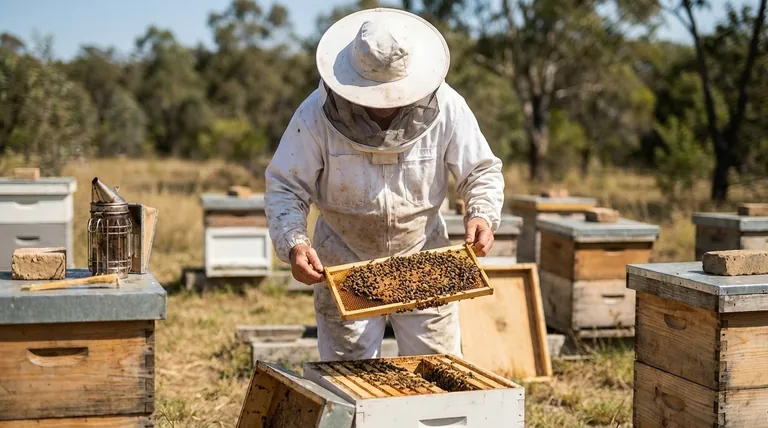
The Anatomy of a Bee Suit
A modern bee suit is a system of integrated components, each designed to address a specific vulnerability. Understanding these parts reveals the principles behind its effectiveness.
The Suit: Jacket and Pants
The main body of the suit can be a one-piece, jumper-style coverall or a separate jacket and pants set. This garment is the first line of defense, made from a thick material—often a cotton/poly blend—that a bee's stinger cannot easily penetrate.
The Veil: A Window to the Hive
The veil is arguably the most critical component. It protects the sensitive areas of the face, neck, and head while providing the necessary visibility to work. Veils are typically attached to the suit with a zipper to create a secure seal.
Critical Design Features
Small details make a significant difference in a suit's effectiveness. Elastic bands at the wrists and ankles create a tight seal, preventing bees from crawling inside. Thumb holes keep sleeves from riding up when you lift your arms, and durable zippers ensure no gaps are left open.
Core Principles of Protection
A bee suit's design is not arbitrary; it's based on a few core principles that counter a bee's defensive instincts.
The Principle of Space
The suit’s primary function is to create distance. The thickness of the fabric is designed so that the length of a bee's stinger cannot reach the skin, even if the bee attempts to sting through the material.
The Principle of a Sealed System
Bees are experts at finding small openings. A quality bee suit is a sealed system. The zippers connecting the veil and the elastic closures at every opening are designed to eliminate any potential entry points for a determined guard bee.
The Principle of Color
You will notice virtually all bee suits are white or a very light color. This is intentional. Dark colors can appear threatening to bees, as they often resemble natural predators like bears or skunks. Light colors are less provocative and help keep the hive calm.
Understanding the Trade-offs
Choosing a bee suit involves balancing absolute protection with comfort and practicality. No single suit is perfect for every situation.
Full Suits vs. Jackets
A full, one-piece suit offers the most comprehensive protection by eliminating the gap at the waist. However, it can be cumbersome and hot. Many beekeepers, especially those with calmer colonies or performing quick checks, opt for a jacket-and-veil combination for convenience.
Material and Ventilation
Traditional cotton suits provide excellent protection but can become extremely hot. Modern ventilated suits use a three-layer mesh design that allows for significant airflow while still preventing stings. This added comfort comes at a higher cost.
Protection Is Not Infallibility
A bee suit drastically reduces the risk of stings, but it does not make you invincible. A forgotten zipper, a tear in the mesh, or exceptionally aggressive bees can still result in a sting. The suit is a tool that must be used in conjunction with calm, methodical beekeeping practices.
Making the Right Choice for Your Goal
Your choice of protective gear should align with your climate, the temperament of your bees, and your personal comfort level.
- If your primary focus is maximum safety as a beginner: Choose a full, one-piece suit with a fully zippered, attached veil to eliminate any potential gaps.
- If your primary focus is comfort during frequent work in a hot climate: A high-quality ventilated jacket or full suit is a worthwhile investment.
- If your primary focus is convenience for quick inspections of a calm hive: A simple jacket-and-veil combination offers a practical balance of protection and ease of use.
Ultimately, the best bee suit is the one that allows you to work confidently and safely, transforming beekeeping from a risk into a rewarding practice.
Summary Table:
| Component | Purpose | Key Feature |
|---|---|---|
| Suit (Jacket/Pants) | Full-body sting barrier | Thick, impenetrable fabric (cotton/poly blend) |
| Veil | Protects face, neck, and head | Attached via zipper for a secure seal |
| Design Features | Prevents bee entry | Elastic cuffs, thumb loops, durable zippers |
| Color | Keeps hive calm | Light colors (white) to avoid provoking bees |
Work with Confidence and Comfort
Equip yourself or your commercial apiary with the right protective gear from HONESTBEE. We supply durable, high-performance bee suits and a full range of beekeeping supplies designed for the demands of professional beekeepers and distributors.
Let us help you select the ideal equipment to ensure safety and efficiency.
Contact HONESTBEE today for wholesale inquiries
Visual Guide
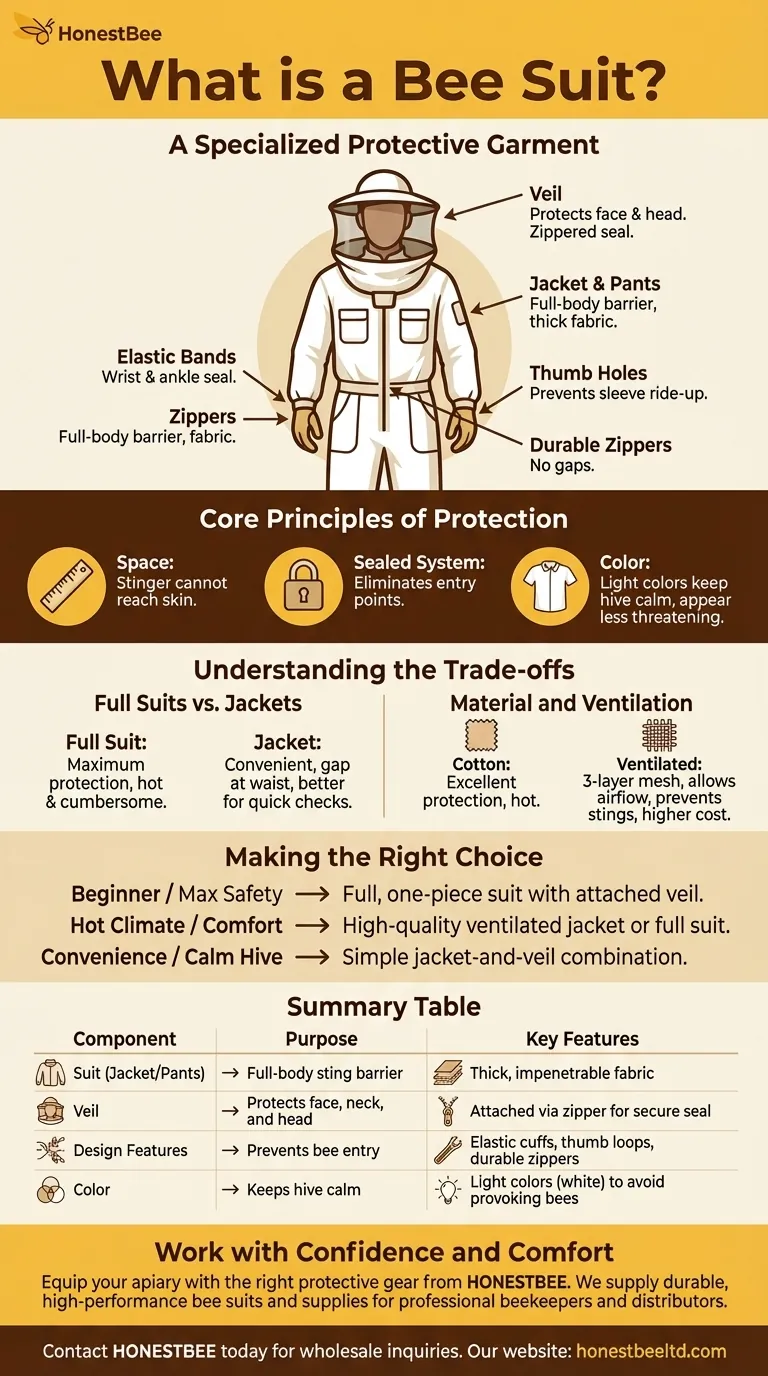
Related Products
- Cotton Beekeeping Suit and Round Hat with Veil Bee Keeper Protective Gear
- 3 Layer Mesh Vented Sting Proof Beekeeping Suit with Hat and Veil
- Vented Beekeeping Jacket with Hood and Veil for Beekeepers
- Heavy Duty Cowboy Beekeeper Hat with Visibility Veil Outdoor Professional Beekeeping Protective Gear
- Beekeeper Cowboy Hat and Veil for Beekeeping
People Also Ask
- How should a beekeeping suit be hung to maintain its shape? Protect Your Investment with Proper Storage
- How should a bee suit be cleaned? Protect Your Investment and Ensure Apiary Safety
- Why is white the predominant color in bee suit designs? | Key to Hive Calm & Beekeeper Safety
- What is recommended for beginners in beekeeping regarding protective clothing? A Complete Safety Guide for New Beekeepers
- Do beekeeping suits completely prevent stings? Maximize Your Apiary Safety with the Right Gear






